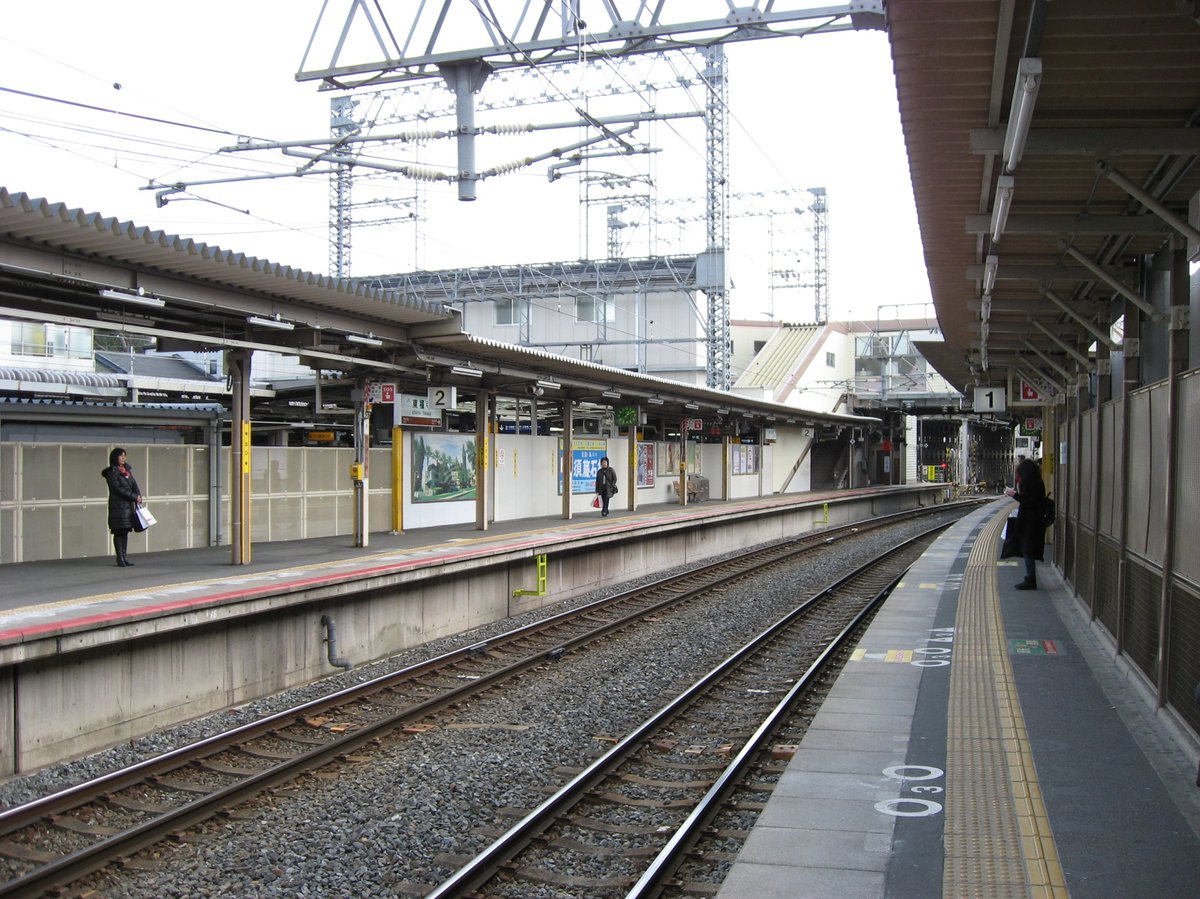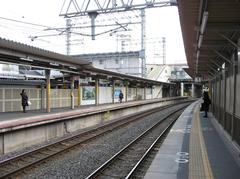
Tofukuji Station Visiting Hours, Tickets, and Kyoto Historical Sites Guide
Date: 15/06/2025
Introduction to Tofukuji Station and Its Significance
Tōfukuji Station, located in Kyoto’s Higashiyama Ward, is a major transportation hub connecting the Keihan Main Line and JR West Nara Line. Since its establishment in 1910, it has evolved into a critical gateway for visitors exploring Kyoto, Osaka, and Nara. Its proximity—just two stops south of Kyoto Station—makes it an optimal entry point for accessing the city’s rich heritage. Beyond its function as a transit point, Tōfukuji Station is renowned for its convenient access to Tōfuku-ji Temple, one of Kyoto’s Five Great Zen Temples, celebrated for its architecture, Zen gardens, and vibrant seasonal foliage.
The station is equipped with modern amenities including multilingual signage, elevators, and ramps to ensure accessibility for all travelers. Ticketing is streamlined through automated machines and staffed counters, and IC cards such as ICOCA and PiTaPa are widely accepted. Train services generally operate from 5:30 a.m. to midnight, supporting both daily commuters and tourists.
Tōfuku-ji Temple, founded in 1236, is a head temple of the Rinzai Zen sect and a symbol of Kyoto’s spiritual legacy. Its highlights include the nationally treasured Sanmon Gate and the iconic Tsutenkyo Bridge with panoramic views of maple trees—particularly popular during autumn. The temple also offers opportunities for Zen meditation and garden exploration, catering to a variety of visitor interests.
This guide provides in-depth information on Tōfukuji Station’s history, ticketing, accessibility, nearby attractions, and practical travel tips to help you make the most of your visit to Kyoto’s southern gateway. For more information and updates, visit Wikipedia, Kanpai Japan, and Nippon.com.
Table of Contents
- Introduction to Tofukuji Station and Its Significance
- Early Development and Modernization
- Station Features, Accessibility, and Ticketing
- Visiting Hours and Ticket Information
- Nearby Attractions and Travel Advice
- Station Facilities and Amenities
- Tōfuku-ji Temple Overview and Cultural Significance
- Key Attractions and Architecture
- Seasonal Highlights and Festivals
- Activities and Experiences
- Practical Visitor Information
- Visitor Etiquette and Local Impact
- FAQs
- Visuals and Media
- References
Early Development and Modernization
Tōfukuji Station opened on the Keihan Main Line in 1910, playing a significant role in Kyoto’s early rail expansion and modernization (Wikipedia). The addition of the JR West Nara Line station in 1957 enabled direct connections between Kyoto and Nara, solidifying the station’s status as a vital interchange. Key upgrades include the addition of a passing loop and platform in 1994 and double-tracking in 2001, which improved efficiency and capacity.
In 2011, direct transfer gates between the Keihan and JR platforms were introduced for seamless movement between lines during peak hours. By 2018, station numbering was implemented to aid both domestic and international travelers—Keihan uses “KH36” and JR West is “JR-D02”.
Station Features, Accessibility, and Ticketing
Accessibility
The station’s layout includes two side platforms, each operated independently by Keihan and JR West. Elevators, ramps, and clear signage ensure accessibility for wheelchair users and travelers with mobility needs.
Ticketing
Tickets for both lines are available at vending machines and staffed counters. IC cards like ICOCA, PiTaPa, Suica, and PASMO are accepted, facilitating easy, cashless travel. For Japan Rail Pass holders, the JR Nara Line segment is covered (Kanpai Japan). Train service hours typically run from 5:30 a.m. to midnight.
Visiting Hours and Ticket Information
Tōfukuji Station
- Operating hours: Open 24 hours; train services from approx. 5:30 a.m. to midnight.
Tōfuku-ji Temple
- General visiting hours: 9:00 a.m. to 4:30 p.m. (last admission at 4:00 p.m.), with seasonal variations.
- Admission: Adults ¥400; children (junior high and below) free. Some areas (e.g., Tsutenkyo Bridge, special gardens) may require separate fees during peak seasons.
- Tickets: Purchase at temple entrance; no advance booking required (Kyoto To Do).
Nearby Attractions and Travel Advice
- Tōfuku-ji Temple: A 10-minute walk from the station, famous for autumn foliage and Zen gardens (Nippon.com).
- Fushimi Inari Taisha: One stop south via JR Nara Line or 20 minutes on foot.
- Sanjūsangen-dō and Kyoto National Museum: Easily accessible via bus or train.
- Best seasons: Spring (cherry blossoms) and autumn (koyo) are peak periods. Arrive early or visit weekdays to avoid crowds.
- Amenities: Limited luggage storage at Tōfukuji Station; larger lockers available at Kyoto Station (Japan News Yomiuri).
Station Facilities and Amenities
- Restrooms: Available on site.
- Coin lockers: Limited availability.
- Multilingual signage: English, Japanese, and other languages supported.
- Waiting areas, vending machines, and staff assistance: Provided for traveler convenience.
Tōfuku-ji Temple Overview and Cultural Significance
Founded in 1236 by Kujō Michiie, Tōfuku-ji is one of Kyoto’s Five Great Zen Temples and a head temple of the Rinzai sect (Nippon.com). Its name is a combination of the Nara temples Tōdaiji and Kōfukuji, reflecting its founder’s vision. The temple is a landmark of Zen architecture and garden design, and its vast grounds include the National Treasure Sanmon gate and the scenic Tsutenkyo Bridge.
Key Attractions and Architecture
- Sanmon Gate: One of Japan’s oldest Zen gates, rebuilt in 1425 and recognized as a National Treasure (Nippon.com).
- Tsutenkyo and Gaunkyo Bridges: Covered bridges offering breathtaking views of maple trees, especially during autumn. Tsutenkyo requires a ticket for access.
- Honbo Gardens: Designed by Shigemori Mirei, featuring innovative moss and stone patterns.
- Kaisando (Founder’s Hall): Houses a statue of Enni Ben’en, notable for its two-story structure.
- Other features: Kyōzō Sutra Repository, monuments, and haiku stones.
Seasonal Highlights and Festivals
- Autumn foliage: Thousands of maples turn the temple grounds into a tapestry of red, orange, and yellow (mid-November to early December). Photography may be restricted on bridges during peak season (Kyoto To Do).
- Festivals: The temple hosts events for cherry blossoms, Obon, and autumn, featuring traditional rituals and food stalls (TravelSetu).
Activities and Experiences
- Zen meditation sessions: Participate in zazen; advance reservation may be required (Kyoto To Do).
- Garden exploration: Discover Honbo and moss gardens, stone arrangements, and tranquil paths.
- Photography: The temple is photogenic year-round. Guided photo walks may be available.
- Personal reflection: Quiet spaces for meditation and prayer welcome visitors of all backgrounds.
Practical Visitor Information
- Access: From Kyoto Station, take the JR Nara Line (2 minutes) or Keihan Main Line from Gion-Shijo. The temple is a 10-minute walk from Tōfukuji Station.
- Facilities: Restrooms, souvenir shops, tea houses, and accessible pathways.
- Accessibility: Elevators and ramps at station and temple; some uneven paths on temple grounds.
- Wi-Fi: Limited at station and temple; pocket Wi-Fi or Japanese SIM card recommended.
Visitor Etiquette and Local Impact
- Respect local customs: Keep noise levels low, follow photography rules, and avoid blocking pathways.
- Support sustainable tourism: Using Tōfukuji Station helps decentralize visitor flow and benefits local businesses (Kyoto City Tourism Plan).
FAQs
Q: What are Tōfukuji Station’s operating hours?
A: The station operates 24 hours, with train services from around 5:30 a.m. to midnight.
Q: How do I buy tickets for Tōfukuji Station and Temple?
A: Tickets are available at station machines/counters for trains; temple tickets are sold at the temple entrance.
Q: Are there luggage storage options?
A: Coin lockers are limited at the station; use Kyoto Station for larger luggage.
Q: Is the station and temple wheelchair accessible?
A: Yes, both offer elevators and ramps, though some temple paths are uneven.
Q: When is the best time to visit?
A: Autumn (mid-November to early December) for foliage; visit early or on weekdays to avoid crowds.
Visuals and Media
- [Insert image: Tōfukuji Station entrance with signage; alt text: “Tōfukuji Station entrance with signage”]
- [Insert image: Tōfuku-ji Temple’s Sanmon Gate; alt text: “Historic Sanmon Gate at Tōfuku-ji Temple”]
- [Insert image: Tsutenkyo Bridge in autumn; alt text: “Tsutenkyo Bridge at Tōfuku-ji Temple with autumn foliage”]
- [Insert map: Tōfukuji Station location relative to Kyoto Station and major attractions]
References and Further Reading
- Wikipedia: Tōfukuji Station
- Kanpai Japan: Tōfuku-ji Temple
- Kyoto Tourist Information
- Nippon.com: Tōfukuji Temple
- Kyoto To Do: Tofukuji Temple
- TravelSetu: Tofukuji Temple Tourism Guide
- Discover Kyoto: Tofukuji
- Kyoto City Tourism Plan (PDF)
Conclusion
Tōfukuji Station and Tōfuku-ji Temple together exemplify the blend of historical depth, cultural richness, and modern accessibility that defines Kyoto. The station’s evolution and strategic location provide both travelers and commuters with efficient access to the city’s southern historic sites, while the temple’s architectural marvels and seasonal beauty offer a profound cultural experience. For a seamless and enriching journey, leverage digital tools like the Audiala app for real-time updates and consider exploring nearby attractions to maximize your itinerary.
Plan your visit today and immerse yourself in the spiritual and architectural wonders that await just steps from Tōfukuji Station!











































































